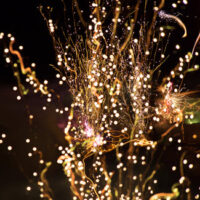Ringing In The New Year With A Bang

The end of an old year and the beginning of a new one – so many of us are more than ready to see what the new year shall bring. Along with the parties and festive celebrations, many revelers may choose to celebrate with fireworks, but when making those plans for fireworks displays, safety measures must be taken to avoid the tragic accidents and injuries that can sometimes occur. Despite the common sense tips offered by authorities for fireworks safety, accidents can and still do occur, and when they do, injuries can be traumatic and devastating.
Fireworks Injuries
Though the number of deaths each year in the United States attributed to fireworks is relatively low, the number of serious injuries caused each year by fireworks is nearly ten thousand. Tragically, nearly half of those injuries are suffered by children, many of whom are quite young. Often times not only will the person who is setting off the fireworks suffer injuries, but innocent bystanders can be harmed as well. Fireworks injuries can harm any part of the body, but the highest percentage of injured body parts include hands and fingers, followed by the eyes, heads, faces, and ears. Statistically speaking, half of all injuries caused by fireworks are burns.
Types Of Burns
Burn injuries are classified by the depth of the injury itself and range from first to fourth degree and treatment varies depending upon the type of burn injury. First degree burns are typically superficial injuries involving just reddening of the skin; blistering usually does not occur. Treatment includes painkillers and the injuries usually heal within a week. For one who has suffered second degree burns, however, blistering is usually present and partial thickness skin damage has occurred. The healing process is usually two to three weeks and involves dressing the wounds and applying topical antibiotics to prevent infection. Third degree burns involve full thickness skin damage and the skin is typically white and leathery, and those with fourth degree burns experience similar symptoms as with third degree burn injuries, but there is deeper damage extending beyond the skin and into the tendons and bones. Treatment for these more advanced injuries can involve surgeries and skin grafting, rehabilitation, and therapy and can take considerably longer than for those lesser degree burn injuries.
Boone & Davis – Your Fort Lauderdale Burn Injury Attorneys
If you have suffered burn injuries, Boone & Davis is here to help you recover for the losses you have suffered. Treatment for and recovery from burn injuries can be expensive and long-lasting, and you need to be able to turn to attorneys experienced with these types of matters to ensure you get the complete recovery you deserve. At Boone & Davis, our attorneys have worked with burn injury victims in the Fort Lauderdale area to obtain the best results possible and will work hard to do the same for you. Contact Boone & Davis now either online or by calling 954.556.5260 to schedule your consultation at no cost or obligation to you.
Resources:
wsvn.com/news/local/official-offers-firework-safety-tips-for-new-year-celebrations/
assh.org/LinkClick.aspx?fileticket=B3K4e1H60Ac%3d&portalid=1
cpsc.gov/PageFiles/150398/Fireworks-Infographic-2015-web.pdf?epslanguage=en
